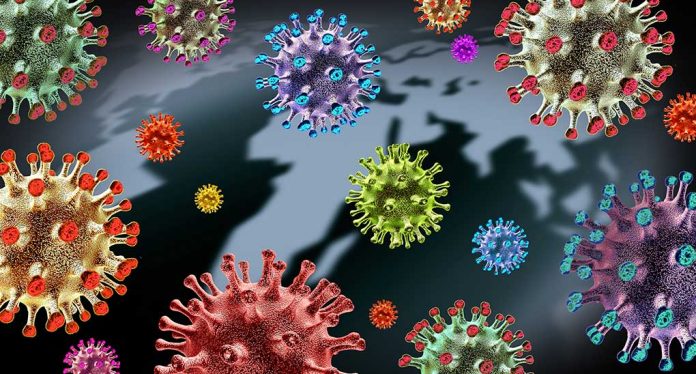
Hawaii’s popular vacation paradise has become a breeding ground for dangerous diseases as whooping cough cases surge to 108 and measles threatens to follow, exposing the consequences of declining vaccination rates in the island state.
Key Takeaways
- Hawaii has reported 108 cases of whooping cough this year, a concerning increase from 84 cases earlier in 2024
- Vaccination rates in Hawaii have fallen below national averages since 2019, creating vulnerability to preventable disease outbreaks
- Whooping cough can be life-threatening, especially for infants, potentially causing pneumonia, seizures, and death
- Health officials are simultaneously monitoring measles threats with over 1,000 cases reported across 30 mainland states
- DTaP and Tdap vaccines provide the most effective protection against pertussis for all age groups
Whooping Cough Outbreak Intensifies Across Hawaiian Islands
The Hawaii Department of Health has confirmed a troubling rise in pertussis cases, with 108 infections recorded by mid-May. This respiratory disease, commonly known as whooping cough, spreads rapidly through airborne transmission when infected individuals cough or sneeze. Initial symptoms mimic a common cold but can quickly escalate to severe coughing fits. In children, these episodes often conclude with a distinctive “whooping” sound that gives the illness its name. The disease poses particular danger to young children and can lead to serious complications including pneumonia, seizures, brain damage, and even death.
“Pertussis is a highly contagious respiratory disease spread through the air via the coughs or sneezes of an infected person. Initially, the symptoms resemble a cold but can progress to intense coughing fits. In children, coughing fits can be followed by a deep breath that makes a whooping sound,” According to the Department of Health (DOH) in their official statement.
Falling Vaccination Rates Create Perfect Storm for Disease Spread
The surge in whooping cough cases coincides with a troubling decline in vaccination rates across Hawaii since 2019. The state’s immunization levels have now fallen below national averages, creating ideal conditions for preventable disease outbreaks. Health authorities emphasize that vaccination remains the most effective defense against pertussis, with the DTaP vaccine recommended for children and the Tdap booster advised for adolescents and adults. Multiple doses are necessary to establish and maintain immunity, especially for protecting those most vulnerable to severe complications.
“The most effective way to prevent pertussis is through vaccination with either the DTaP (diphtheria, tetanus and pertussis) or Tdap (tetanus, diphtheria and pertussis) vaccines. Multiple doses are recommended for infants, children and adults.”
Medical experts highlight the insidious nature of whooping cough, which can masquerade as other respiratory conditions. “Pertussis is insidious and can be easily mistaken for other respiratory diseases, including viruses,” Stated Dr. Marc Siegel.
Measles Threat Looms as Hawaii Monitors Mainland Outbreak
While battling the whooping cough surge, Hawaii health officials are simultaneously monitoring the rising threat of measles. Although no new cases have been reported since two travel-related infections in early April, authorities remain vigilant as mainland cases exceed 1,000 across 30 states. The DOH has emphasized the critical importance of maintaining high vaccination rates to prevent a measles outbreak from gaining traction in the islands. The department urges residents with vaccine-related questions to consult healthcare providers rather than delaying or declining immunizations.
“DOH recommends continued vigilance and efforts to increase the MMR (measles, mumps and rubella) vaccination rate. High vaccination rates protect individuals and communities and prevent cases from becoming outbreaks.”
Protecting the Most Vulnerable Through Community Immunity
Infants under one year old face the highest risk of hospitalization and serious complications from whooping cough, but they can’t receive full vaccination protection until completing multiple doses. Medical experts stress the importance of creating a protective bubble around these vulnerable children. “The best protection is for everyone around them to be vaccinated.”
“The DTaP (diphtheria, tetanus, pertussis) vaccine offers strong protection to children — about 98 out of 100 children are protected for at least a year after the fifth dose, and about 70% are still protected for up to five years,” Stated Dr. Neha Pathak.
Pregnant women are specifically advised to receive the Tdap vaccine during their third trimester, which helps provide passive immunity to newborns during their most vulnerable period. This strategy creates a critical bridge of protection until infants can develop their own immunity through vaccination, highlighting the importance of a comprehensive community approach to disease prevention rather than leaving each family to fend for themselves against these preventable threats.














